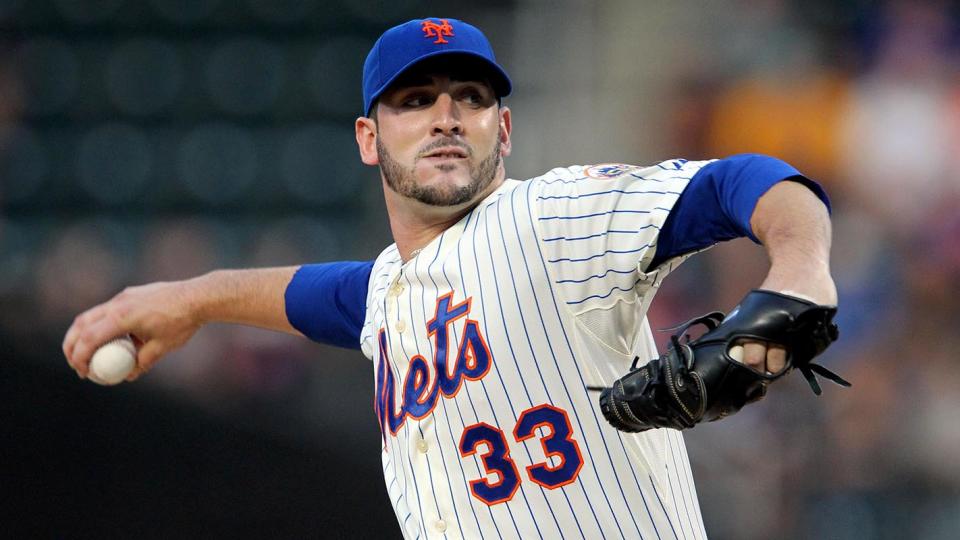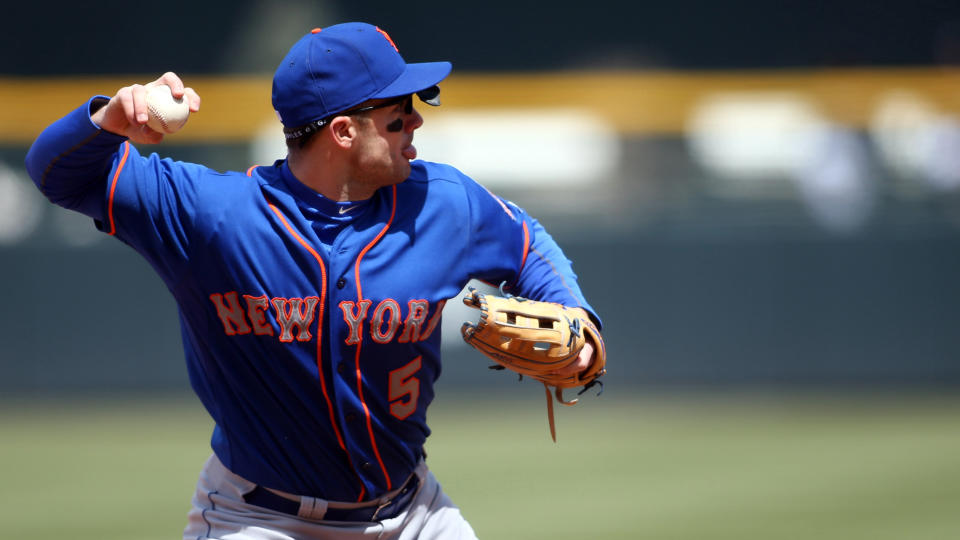The Mets have the No. 19 pick in the first round of the 2024 MLB Draft on Sunday, and the player they choose could be ready for his big league debut in two years. Or maybe he will be a high school pitcher who takes five years to develop. Perhaps he’ll never make it to the majors at all.
The point is that like every other draft, the MLB Draft is a crapshoot. For every Bryce Harper (taken No. 1 overall in 2010, current superstar), there is a Christian Cohlon (tabbed at No. 4 overall in 2010, career .318 slugging percentage).
For every Darryl Strawberry (selected No. 1 overall by the Mets in 1980), there is a Steve Chilcott (drafted No. 1 overall by the Mets in 1966).
In ranking the Mets’ 10 best first-round picks ever, we’ll be taking into account the performance of those players with the Mets and with any teams they played with after leaving the Mets.
If New York made a good pick, that pick won’t be penalized because the same front office (or a different front office) eventually moved on from that player.
Picks also won’t be dinged too much if their success was fleeting due to injury or non-baseball reasons. In other words, if the Mets drafted a player who was at one time on a potential Hall-of-Fame track, he’ll be on this list…
10. Lee Mazzilli, No. 14 in 1973
A Brooklyn native, Mazzilli carved out a 14-year career in the majors, including a three-year run from 1978 to 1980 when he was a star with the Mets (he made the National League All-Star team in 1979) as he hit .286/.374/.437 with 47 homers.
After stints with the Rangers, Yankees, and Pirates from 1982 to the middle of 1986, the Mets added Mazzilli during the 1986 season — with him becoming a key bench piece during their championship run. He then hit .306/.399/.460 for the Mets in 1987.
9. Scott Kazmir, No. 15 in 2002
Before the Jarred Kelenic trade, there was the Scott Kazmir trade. And it can be argued that the Kazmir trade was even worse since the 2004 Mets were not contenders — and because they traded Kazmir for Victor Zambrano, who flamed out in spectacular fashion after one decent season in Queens.
Meanwhile, Kazmir had a four-year run with the Tampa Bay Rays from 2005 to 2008 where he was one of the best pitchers in the American League. He wound up pitching 12 years in the majors, though his early promise was derailed due to injury.
8. Gregg Jefferies, No. 20 in 1985
Jefferies did not fit in with the Mets of the ’80s, leading to his stint in Flushing only lasting from 1988 to 1991. He was traded to the Royals before the 1992 season, and blossomed with the Cardinals, where he made the All-Star team in 1993 and 1994.
During his 14-year career, which ended after the 2000 season, Jefferies hit .289/.344/.421. with 126 homers and 196 stolen bases.
7. Jeromy Burnitz, No. 17 in 1990
Burnitz struck out a lot. But when he wasn’t striking out, he was hitting balls over the fence. During a 14-year career (including stints with the Mets from 1993-94 and 2002-03), Burnitz hit .253/.345/.481 with 315 home runs.

6. Matt Harvey, No. 7 in 2010
That thing we said above about being on a Hall of Fame track before being derailed for non-baseball reasons? That was Harvey, who had a 2.53 ERA and 1.00 WHIP with 449 strikeouts in 427 innings pitched with the Mets from 2012 to 2015.
Harvey missed the end of the 2013 season and the entire 2014 season due to Tommy John surgery, returned with a vengeance in 2015, and had Thoracic Outlet surgery in 2016. It was downhill from there.
Harvey’s Mets tenure ended during the 2018 season, and he bounced around to the Reds, Angels, Royals, and Orioles before retiring in May of 2023 at just 34 years old.
5. Michael Conforto, No. 10 in 2014
Despite going through a sophomore slump in 2016 and struggling in 2021 in his walk year, Conforto was a very good player for the Mets over seven seasons after making his big league debut in 2015 at the age of 22 — when he skipped over Triple-A.
In 757 games, Conforto hit .255/.356/.468 with 132 homers and 141 doubles. That included a 2017 season that ended early due to a shoulder injury that required surgery and lingered into 2018, when he returned too early. Conforto was on the upswing in 2019 and had an All-Star-worthy 2020 before a down 2021.
Conforto missed the 2022 season due to injury, and has been a solid player for the Giants the last two seasons.
4. Jon Matlack, No. 4 in 1967
Lost a bit in the brilliance of Tom Seaver and his sidekick Jerry Koosman, Matlack was very good in his own right. He won the Rookie of the Year award in 1972, when he had a 2.32 ERA in 244 innings pitched, and he didn’t really slow down from there.
Over 1,448 innings pitched in 203 games with the Mets (199 starts), Matlack had a sparkling 3.03 ERA and 1.19 WHIP while making the All-Star Game three times (1974, 1975, 1976).
Matlack pitched for the Rangers after his time with the Mets ended, posting a 3.41 ERA in six seasons before retiring after the 1983 campaign.


3. David Wright, No. 38 in 2001
The Mets received a compensation pick when Mike Hampton signed with the Rockies after the 2000 season, and they turned it into Wright, who became the face of the franchise and the best offensive player the team produced since Darryl Strawberry.
The Captain hit .296/.376/.491 with 242 homers, 390 doubles, and 970 RBI over 14 seasons in Queens. To put those numbers in perspective, Wright hit 204 of those homers before his age-30 season in 2013, when the injuries hit. He played in only 323 games over the final six years of his career.
2. Darryl Strawberry, No. 1 in 1980
Strawberry came into the league in 1983 after being compared to Ted Williams, and all he did in his eight seasons with the Mets was win the Rookie of the Year award, make seven All-Star teams, and finish in the top six in MVP voting three times (he should’ve won it in 1988, but somehow lost to Kirk Gibson).
After leaving the Mets for the Dodgers before the 1991 season, Strawberry — who struggled with substance abuse, leading to three suspensions by MLB in the ’90s — had only three more seasons with double-digit home runs.
Strawberry retired after the 1999 season, ending his career with 335 homers and 1,000 RBI. His No. 18 was retired by the Mets in 2024.
1. Dwight Gooden, No. 5 in 1982
Like Strawberry, Gooden was a generational talent. And it can be argued that Gooden not only had a chance to be a Hall-of-Famer, but one of the 10 best pitchers in in the history of baseball.
As a 19-year-old in 1984, Gooden had a 2.60 ERA and 1.07 WHIP while striking out 276 batters in 218 innings.
As a 20-year-old in 1985, Gooden spun one of the best seasons ever, with a 1.53 ERA and 0.96 WHIP while striking out 268 batters in 276.2 innings.
By 1986, Gooden — who had a 2.84 ERA and struck out 200 batters that season — was struggling with substance abuse, and missed the Mets’ World Series parade because of those struggles. He was suspended to begin the 1987 season after testing positive for cocaine.
Had it not been for the off-field issues, Gooden — who had a 3.10 ERA and 1.17 WHIP with 1,875 strikeouts by his age-29 season — could’ve been one of the best ever.
His No. 16 was retired by the Mets in 2024.
Source Agencies

